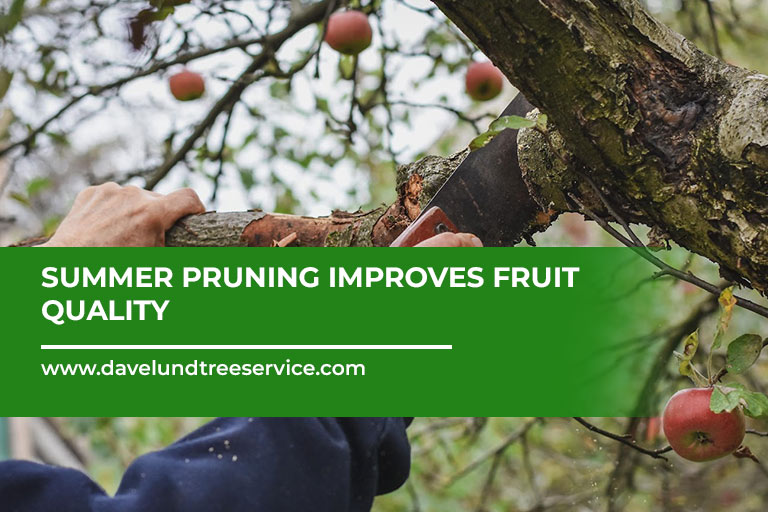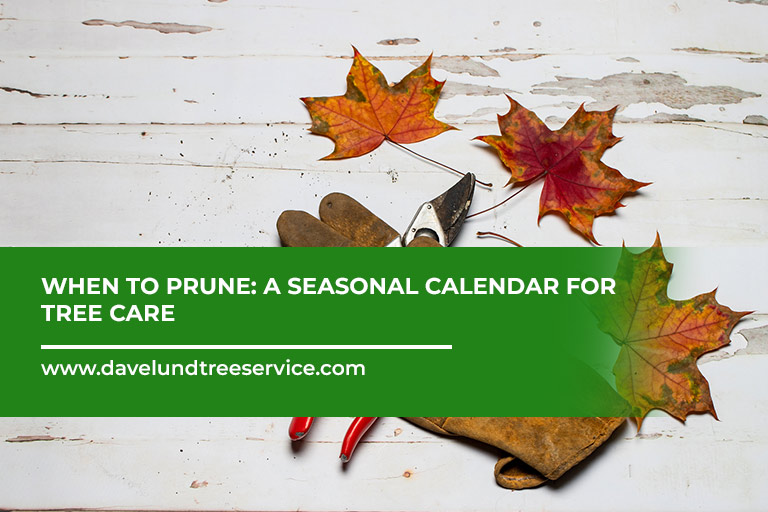Tree pruning is an essential practice for maintaining healthy and beautiful landscapes. The timing of pruning can significantly impact a tree’s health and growth. Understanding when to prune different types of trees can help ensure optimal results and keep your trees thriving throughout the year.
Winter Pruning: Preparing for Spring (December to early March)
Winter is an ideal time for pruning many types of trees, particularly deciduous species. According to a post in PennState Extension, pruning these trees after they have fully entered dormancy, typically in early winter, is recommended. This timing not only minimizes the risk of disease but also allows for better assessment of the tree’s framework since the lack of leaves provides a clear view of the tree’s structure.
Ideal Trees for Winter Pruning

Deciduous trees, including maples, oaks, and fruit trees, benefit from winter pruning. This is the perfect time to remove dead wood, shape the tree, and improve sunlight penetration through the canopy.
Key Considerations
When pruning in winter, focus on removing dead, damaged, or diseased branches, and make clean cuts to promote proper healing. Avoid heavy pruning, especially on trees that have already been stressed by weather or other factors, to prevent further damage.
Spring Pruning: Early Growth Management (Late March to early June)
As trees begin to awaken from their winter dormancy, spring becomes a critical time for pruning. This season is perfect for making minor adjustments and managing early growth.
The fresh growth that emerges in spring makes it easier to identify which branches may need attention. Pruning in the early spring allows for the control of rapid growth and the encouragement of a strong, healthy structure.
Ideal Trees for Spring Pruning
Ornamental trees, flowering shrubs, and certain fruit trees are ideal candidates for spring pruning. This period is also suitable for pruning flowering trees after they have bloomed, which helps preserve their blossoms for the next season.
Key Considerations
During spring pruning, it’s important to avoid heavy cutting. Focus instead on minor corrections, such as removing suckers, water sprouts, and crossing branches. This careful approach helps reduce stress on the tree, promotes healthy new growth, and ensures a balanced structure. Remember, it’s also crucial to sanitize tools between cuts to prevent the spread of disease, especially when working with flowering trees.
Summer Pruning: Controlling Growth and Shape (June to August)
Summer pruning is an excellent opportunity to manage the size and shape of trees, particularly after the initial flush of growth in spring. This season allows you to see how the tree has developed and make adjustments to maintain a healthy and aesthetically pleasing structure.
Pruning during the summer months helps control excessive growth, particularly in trees that have become too large for their space.
It also allows for the removal of damaged or diseased branches that may have become apparent as the tree leafed out. Summer pruning can enhance air circulation and sunlight penetration, which is beneficial for fruit production and overall tree health.
Ideal Trees for Summer Pruning

Fruit trees, such as apples and pears, as well as flowering trees, are ideal candidates for summer pruning. This timing helps manage the size of fruit trees, improves fruit quality, and reduces the risk of breakage from heavy fruit loads.
Key Considerations
When pruning in summer, be mindful of the tree’s energy reserves, which are lower after the spring growth spurt. Focus on light pruning and avoid removing large branches, as this can stress the tree.
Be particularly cautious with pruning cuts, as they can be more prone to sunscald. This is also a good time to remove suckers and water sprouts that can drain the tree’s resources and disrupt its natural shape.
Fall Pruning: Preparing for Dormancy (September to November)
As the growing season winds down, fall becomes a strategic time for pruning trees. This period allows for the removal of any damaged or dead branches before the winter months set in, reducing the risk of injury to the tree during harsh weather conditions.
Pruning in the fall helps trees prepare for winter dormancy by eliminating weak or broken limbs that could be compromised under the weight of snow and ice. It also provides an opportunity to clean up the tree’s appearance after a season of growth.
Ideal Trees for Fall Pruning
Evergreens and trees with late-season growth are particularly well-suited for fall pruning. This is also a good time to address any structural issues in young trees, ensuring they are strong enough to withstand winter storms.
Key Considerations
While fall pruning can be beneficial, it’s important not to prune too heavily, as trees are beginning to enter dormancy and their ability to heal wounds slows down. Focus on removing dead or diseased branches and tidying up the overall structure.
If you’re unsure about the best approach or have large trees that require attention, consider hiring a professional tree service in Newmarket (or from your local area). They can provide expert advice and ensure safe and effective pruning, especially for more complex tasks.
Special Considerations: Understanding Your Tree’s Needs
Not all trees respond the same way to pruning, and understanding the specific needs of your tree species is crucial for successful care.
Some trees, like maples and birches, tend to “bleed” sap if pruned in late winter or early spring, while others may be more susceptible to disease if pruned during certain times of the year. Research your tree species or consult an expert to determine the best time for pruning.
Consulting with Professionals
For large or complex trees, or if you’re unsure about the best pruning practices, it’s wise to consult with a professional arborist. They can provide tailored advice and services, ensuring that pruning is done safely and effectively. Professional services are especially valuable for trees that are near power lines, buildings, or other hazards, where safety is a primary concern.
Ready to Prune Your Trees?
Proper timing and techniques in tree pruning can make all the difference in maintaining a healthy and beautiful landscape. Whether you’re looking to enhance your trees’ growth, manage their shape, or ensure safety, it’s essential to prune at the right time.
For professional tree pruning in Newmarket, trust the experts at Dave Lund Tree Service. Call us at (905) 775-1020 to schedule a consultation and keep your trees thriving all year round!

